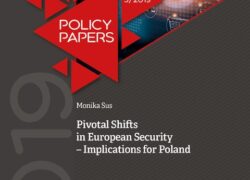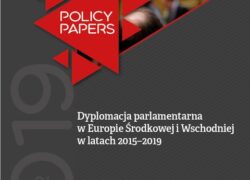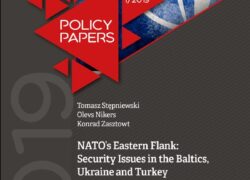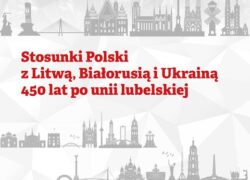Suspended dialogue. On 24 June 2018 in Brussels, a meeting was held between Federica Mogherini, the EU’s High Representative of the Union for Foreign Affairs and Security Policy, Aleksandar Vučić, the President of Serbia, and Hashim Thaçi, the President of Kosovo. The intensification of the dialogue between Serbia and Kosovo declared during the meeting was believed to result in the development of a win-win political solution which would both symbolically and tangibly end the conflict and enhance Serbia’s and Kosovo’s European prospects. However, the fundamental character of the dispute resulted in the dialogue, just like several times before, becoming suspended.
The direct cause of the current crisis in negotiations can be traced back to Kosovo’s decision of 21 November 2018 to impose 100% duty on goods imported from Serbia. The decision constituted a retaliatory measure against Serbia for blocking Kosovo’s Interpol membership, and in a broader perspective, a response to Belgrade’s consistent policy of impeding Kosovo’s statehood internationally. One cannot exclude the possibility that Kosovo decided to levy the duty in order to halt the talks between presidents Vučić and Thaçi, moderated by the EU’s High Representative, concerning the adjustment of Serbia-Kosovo boundary.
F. Mogherini’s recent attempts to lift the duty and restart the talks proved unsuccessful. Kosovo declares the duty will only be lifted when Serbia acknowledges Kosovo’s statehood. On the other hand, Belgrade agrees to reenter the talks after the duty has been lifted. In addition, Serbs openly state they will never acknowledge Kosovo’s independence.
A potential solution: adjustment in the delineation of the boundary. Over the past year, the scenario which was discussed the most frequently (and was the most criticized as well) was the “adjustment of the boundary” (srb. korekcija granica, alb. korrigjim kufitar). The premises the adjustment is based upon have neither been clearly defined nor presented to the public opinion in Serbia and Kosovo.
The adjustment was publically backed by A. Vučić, the President of Serbia. He argues that the division of Kosovo’s territory constitutes a rational compromise reflecting the present reality. In addition, he believes it is partly beneficial for Serbia. However, President Vučić is enigmatic in outlining the plan to the Serbian public. It is believed that the plan was to maintain northern Kosovo within Serbian boundaries in exchange for the acknowledgement of Kosovo’s statehood in an international legal formula. H. Thaçi, the President of Kosovo, strongly favored the adjustment of the boundary and the annexation of the Preševo Valley to Kosovo.
The discussion concerning the delivery of such a scenario, developed with the mediation of the EU’s High Representative in the framework of a murky dialogue between the two presidents, hit its peak in August and September of 2018. However, subsequent months proved that to expect a swift breakthrough in Serbia-Kosovo relations would be overly optimistic.
Opposition to the adjustment of the boundary. The prospective adjustment of the boundary between Serbia and Kosovo is problematic for a number of reasons.
As far as Serbia is concerned, the current internal situation of the country presents a significant political obstacle. Since December 2018, Serbia has been experiencing public protests against President Vučić. In addition, opposition parties, which joined forces under a catch-all name Alliance for Serbia, are against the adjustment of the boundary favored by the president. However, they have not developed any constructive alternative. Members of the parliament representing the democratic opposition have been consistently boycotting plenary sessions of the Serbian parliament. The opposition boycotted e.g. the debate with the President of Serbia concerning the situation in Kosovo, which was held on 27-28 May 2019. The protracted political crisis in Serbia results in the president and government lacking sufficient public legitimation to establish, a burdensome for Serbia, agreement regarding the issue of Kosovo.
With regard to the Republic of Kosovo, the situation is complicated as well. Ramush Haradinaj, the Prime Minister of the Republic, who heads the Alliance for the Future of Kosovo, remains a stark opponent of the adjustment of the boundary. This situation severely complicates the coordination of foreign politics and aggravates the traditionally uneasy relations between the current president and PM of Kosovo. Moreover, the Democratic Party of Kosovo, a coalition party, is also internally divided as to the adjustment of the boundary between Serbia and Kosovo.
A clear objection towards territorial changes has been expressed by the main Albanian political opposition, i.e. the Democratic League of Kosovo, and Self-determination movement (Vetëvendosje). In addition, these parties accuse Kosovo’s authorities of not having public mandate to strike a deal with Serbia. The situation results in the fact that President Thaçi, abandoned is his support for the adjustment of the boundary, has no political power to accept a territorial cession agreement.
The majority of Serbs and Kosovans are against any adjustment to the boundary as well. Serbs, who have been being persuaded for years that Kosovo continues to remain their territory, cannot understand why the authorities would suddenly acknowledge Kosovo’s independence. On the other hand, Kosovan Albanians would gladly see the Preševo Valley within Kosovo’s boundary. However, they will never agree to the secession of northern Kosovo and will argue that Albanians have already lost enough of their ethnic territories.
The objection to the adjustment of the Serbia-Kosovo boundary has also been voiced by several European states. These countries, Germany as a notable example, fear any change to the current delineation of the boundary may endanger the territorial integrity of the remaining post-Yugoslavian states and destroy the stability of the whole Balkan region.
The negative attitude of the international and domestic public resulted in both presidents’ temporary withdrawal from the concept of the cession. Although controversial, the idea of a tangible adjustment of the boundary as a solution to the conflict, has been suspended and hushed up.
As a consequence, the dialogue has been complicated by the lack of an alternative compromise agreement. The protracting suspense as to the final solution to the conflict leads to the growing tensions in Kosovo and Serbia and to political manifestations. An example of this can be seen in the Kosovo Police special unit’s (KP ROSU) raid conducted on 28 May in northern Kosovo. The raid resulted in 28 people being apprehended (including 19 officers of the Kosovo Police – 11 Serbs, 4 Albanians, and 4 Bosnians). Even though, officially, these measure were taken against organized crime, they also constituted a political declaration that Kosovo holds jurisdiction in the region and will not afford to lose the territory. This premise can be supported by the fact that the intensification of tensions in northern Kosovo coincided with the session of the Serbian parliament with President Vučić, during which Serbian-Kosovan dialogue was discussed. In response, President Vučić announced the battle-readiness of Serbian military forces and did not exclude to possibility of a military intervention in northern Kosovo.
Prospects for further dialogue. Even though it is clear that the dialogue between Serbia and Kosovo entered a decisive phase, a breakthrough in the coming months is unlikely. At present, neither of the sides holds a strong public mandate nor political will (or courage) to draw up a truly historic agreement.
The political transition in the EU, which commenced with the election to the European Parliament, does not favor swift solutions as well. Until the new European Commission is established and its work resumes in November 2019, the EU institutions and western governments will seek to kick start the dialogue between Kosovo and Serbia. However, they will not pursue any strategic decisions concerning the matter. Therefore, a compromise between Serbia and Kosovo will be developed in 2020 at the earliest. Due to the severe sensitivity of the Kosovo issue, one cannot exclude the possibility that the parties of the conflict will not strike an agreement and the current status quo will be suspended for years to come.
Trans. Tomasz Kuraś




